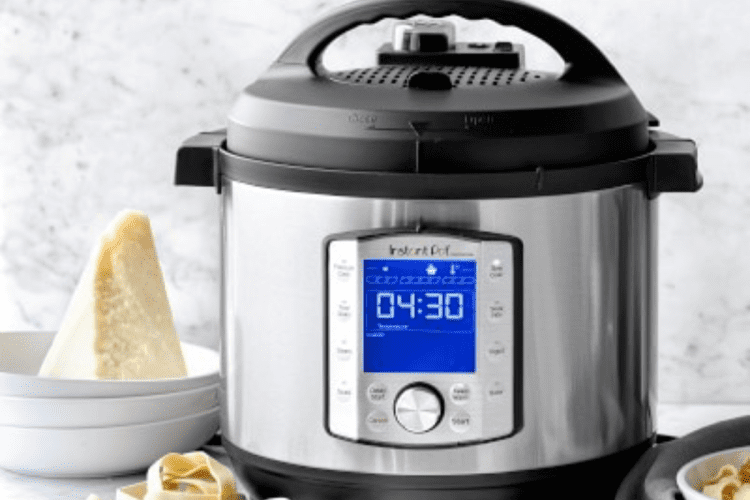Hey, I’m Marcus Smith, your go-to troubleshooter, and today we’re diving into a common issue that many Instant Pot users encounter – pressure release valve problems. But don’t fret; I’m here to help you troubleshoot and fix these issues like a pro.
Understanding the Pressure Release Valve
Ah, the pressure release valve – it might be small, but it plays a crucial role in your Instant Pot cooking adventures. This little guy is responsible for maintaining the pressure inside your Instant Pot, ensuring your recipes turn out just the way you want them. When things get too steamy, it’s the pressure release valve’s job to release that excess pressure and keep your cooking safe.
But what happens when this valve isn’t doing its job properly? Well, that’s when the troubleshooting adventure begins. Let’s take a closer look at the pressure release valve, its common problems, and how to get it back on track so you can enjoy hassle-free cooking with your Instant Pot. So, stay with me as we unravel the mysteries of this essential component, and remember, there’s no pressure we can’t handle together!
Common Pressure Release Valve Problems
The pressure release valve might seem like a simple piece of equipment, but it can run into some common issues that might leave you scratching your head. So, let’s break down a few of these common problems:
Stuck Valve: Sometimes, the pressure release valve can get stuck due to food particles or debris. This can disrupt the pressure release process, and you’ll need to give it a little cleaning and maintenance.
Weak Steam Release: If you notice that the steam release isn’t as strong as it used to be, it might indicate there’s a clog or blockage somewhere. A blocked valve won’t be able to release pressure properly, which can affect your cooking.
Leaking Steam: A valve that’s leaking steam even when your Instant Pot is under pressure can be a sign of a malfunction. This issue might require some replacement parts or adjustments.
Rattling or Vibrating Valve: If your pressure release valve starts rattling or vibrating excessively during cooking, it’s a sign of excess pressure inside. While some vibration is normal, excessive rattling might indicate that your Instant Pot isn’t sealed correctly.
Troubleshooting Steps
Now that we’ve identified some common issues with the pressure release valve, it’s time to roll up our sleeves and dive into troubleshooting. Here’s a step-by-step guide to help you get your Instant Pot back in working order:
Check for Debris: Start by ensuring there’s no food or debris clogging the valve. Sometimes, a simple clean-up is all you need. Carefully remove the valve and clean it thoroughly. Use a brush, toothpick, or a small tool to clear any blockages.
Inspect the Sealing Ring: Ensure that the sealing ring is in good condition and properly seated. If it’s damaged or not fitting correctly, it might cause steam leakage. Replace it if necessary.
Pressure Cooker Lid: Make sure the pressure cooker lid is properly aligned and locked. Sometimes, issues with the lid’s alignment can affect the pressure release process.
Adjust the Steam Release Valve: Sometimes, adjusting the position of the steam release valve might help. Gently move it around and ensure it’s in the correct position. It should be in the sealing position during cooking and venting position to release pressure.
Check the Float Valve: The float valve, usually located next to the pressure release valve, should move freely. If it’s stuck, that could be causing issues. Make sure it’s clean and can move up and down easily.
Replace Worn-out Parts: If the valve is old and worn-out, it might not work correctly. You might need to replace it. Be sure to get a compatible and genuine replacement part.
Vent Tube Inspection: The vent tube is a small component often overlooked. Ensure it’s clean and not clogged.
Preventive Maintenance
Preventive maintenance is a crucial aspect of ensuring your Instant Pot continues to function flawlessly. Here are some proactive steps you can take to avoid pressure release valve problems:
Regular Cleaning: Don’t wait for a malfunction to clean the pressure release valve. After each use, remove it and rinse it under warm water. Occasionally, you can disassemble the valve for a thorough cleaning.
Keep the Valve Clear: Be mindful of what you’re cooking. Foods that produce a lot of starch or foam can lead to blockages. If you’re preparing dishes like oatmeal, rice, or legumes, ensure they don’t clog the valve.
Replace Worn Seals: Just like the sealing ring, seals on the pressure release valve can wear out over time. Keep an eye on their condition and replace them when necessary.
Lubrication: Occasionally, you can apply a thin layer of food-grade lubricant to the valve’s moving parts. This helps maintain smooth operation.
Handle with Care: When you’re removing, cleaning, or reassembling the valve, do it gently. Rough handling can lead to damage or misalignment.
Vent Tube Maintenance: Ensure the vent tube is clean and unobstructed. Any blockages can affect the valve’s performance.
Conclusion
In conclusion, addressing pressure release valve problems in your Instant Pot is not as daunting as it may seem. With a little understanding, troubleshooting, and preventive maintenance, you can keep your pressure release valve functioning smoothly. By regularly cleaning, checking for issues, and handling your Instant Pot with care, you’ll ensure that it continues to serve you well for many delicious meals to come. If you ever do encounter a problem, don’t worry; you’re well-equipped to tackle it with confidence.
